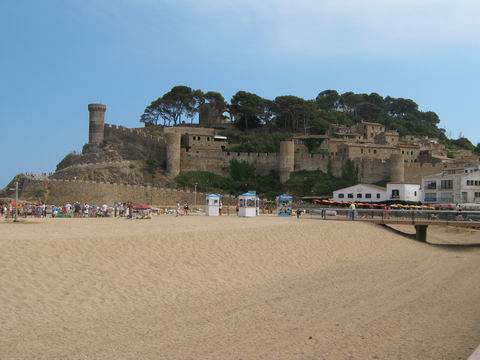You might expect to see somebody of a more bellicose nature standing in the grounds of the castle of Tossa de Mar in the province of Girona, looking out from the heights to sea as if expecting yet another invasion.
Instead, what you’ll find is a statue of Ava Gardner, scantily clothed and in her animal prime, waiting for the director’s cut no doubt. For it was here that Ava came in April 1950, along with James Mason and director Albert Lewin, to film ‘Pandora and the Flying Dutchman’.
Just as in Barcelona’s port a statue of Christopher Columbus looks out to sea, so from the heights of the Vila Vella castle Ava has stared moodily out to sea since 2000.
It may be that Gardner was the best animal for the job, or the studios may have wanted to put a few pants between her and her married lover Frank Sinatra.
Whatever the reason, Gardner spent most of her time filming the beach scenes at El Castell between Tossa de Mar and Palamós, while the interior scenes looked down upon the beach through the emblematic towers of the castle.
Art loving American director Albert Lewin commandeered the services of surrealist painter Man Ray for the sets, including a chess set, for a film shot in the town where Chagall had lived in the thirties.
The story takes place in Spain, the seaport of Esperanza (‘Hope’), where the ghost of the hopeless Flying Dutchman, played spectrally by James Mason, becomes the lust object of Ava, when she’s not seducing her daily brace of bullfighters before breakfast.
Photos of Sinatra, accompanied by musician James Van Heusen visiting the Villa Vella castle, abound in Tossa, as do rumours and misinformation.
In the Hotel Tonet in the Plaça Església, photos of Ava’s stay in Tossa are still on show.
The film launched Tossa as a tourist attraction, and Girona, where Gardner stayed at the Hotel Peninsular, now has a Cinema Museum, which is probably not unconnected with the events that took place there during the spring of 1950.
